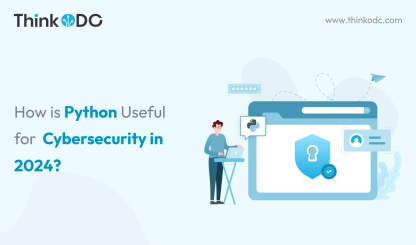With the growing technologies of the digital era, security has become a major concern for the entire world. Whether it's securing personal information online or digital data of top-tier businesses everything is under the prospect of cyber threat these days.
Note: Based on the highly renowned Verizon 2023 Data Breach Investigations Report (DBIR) it was highlighted that 44% of API(Application Programming Interface) security incidents have been a concerning trend. In fact 68% rise in financially motivated incidents was reported that involved ransomware or extortion, with a median loss of $46,000 per breach.
Hence, it's evident that the first weak spot for websites is API.
APIs are easily exploited by attackers to steal sensitive information or disrupt operations. Therefore, securing them becomes the fundamental step. Implementing encryption and decryption in an API using the Advanced Encryption Standard (AES) is a common practice nowadays.
In this blog you’ll explore all about AES Encryption Core Concepts, setting up AES in Python, and the best practices of API Encryption & Decryption with AES that can safeguard your business with the help of the most experienced Python developers. Let’s decode!
What is AES & why choose it for security?

AES (Advanced Encryption Standard) is a symmetric encryption algorithm formulated by the National Institute of Standards and Technology (NIST) in 2001 for coders. It became popular for its speed, security, and efficiency, making it a preferred choice for data protection.
Highly experienced Python developers vouch for AES because it addresses key challenges in encryption such as:
- Confidentiality: Keeps sensitive data private.
- Integrity: With modes like GCM, users can also verify data integrity.
- Efficiency: Its fast processing makes it suitable for real-time applications, such as APIs.
Python is a popular language for its readability, extensive libraries, and expansive frameworks like Flask and Django, it's best for API development. It also fits perfectly for the secure implementation of AES encryption and decryption. Let’s dig deeper into AES key features & how AES Works.
Key features of AES
Symmetric Encryption: The same key is used for encryption and decryption.
Block Cipher: It operates on fixed-size blocks of data starting from 128 bits.
How AES works?

The encryption or securing of data by AES is done in the form of 128-bit blocks using a series of transformations - substitution, permutation, mixing, and key addition. While the number of transformation rounds depends on the key size. For instance 10 rounds for 128-bit keys, 12 for 192-bit, and 14 for 256-bit. Finally, for decryption or decoding the key it reverses these transformations to extract the original data.
Why setting up AES in Python is beneficial for your business?
Python is a super versatile language and its expansive open-source libraries make it ideal for implementing AES encryption. It allows you to secure sensitive data in various business applications.
Some of the popular Python libraries for AES encryption/decryption include:
PyCryptodome: It is a self-contained Python package offering secure cryptographic algorithms.
Cryptography: It's a huge library providing both high-level recipes and low-level interfaces for cryptographic operations.
Importance of Python Libraries in Different Industries
These Python libraries for AES encryption/decryption prove to be a lifesaver for industries where data security is of supreme importance like e-commerce, healthcare, and finance.
Securing E-commerce payment gateways: In e-commerce, you can hire offshore Python experts to help encrypt credit card details during API communications. It protects your company details & user’s information from theft, ensuring secure transactions.
Enhanced protection for IT startups and businesses: Dedicated Python developers choose secure libraries like PyCryptodome and cryptography for API protection. It minimizes security risks, and vulnerability to attacks, and complies with industry regulations.
How AES encryption and decryption is implemented?
To safely implement AES encryption and decryption a secure key and IV are created. They are highly important for the confidentiality and integrity of encrypted data. The secure key is for the encryption and decryption processes, while the IV prevents encrypted patterns from being disclosed, by producing different ciphertexts.
Code Example to generate key & IV
Encrypting data with AES
Step 1: Make sure the data is in bytes format.
Step 2: Padding the data into a multiple of the block size (128 bits).
Step 3: Creating AES cipher objects to initialize the key and IV.
Step 4: Encrypting the padded data.
Code Example
Decrypting data with AES
Step 1: Initializing the AES cipher encrypted with the key and IV.
Step 2: Decrypting the encrypted data.
Step 3: Remove padding to extract the original plaintext.
Code Example
Ensuring data integrity and handling errors
With the use of authenticated encryption modes like AES-GCM good Python programmers ensure data integrity. They can also implement integrity checks to find out errors by spotting exceptions and validating inputs & outputs.
Why choose AES for secure API encryption?
Security attacks are not only financially damaging but imply a huge stigma on the reputation of IT startups or small-scale businesses. Hence it's very crucial that you hire Python development teams that follow best practices for secure API Encryption & decryption. Here’s a small checklist of the best API encryption methods a programmer should follow:
Key management
-
Strong keys: Generating strong cryptographic keys and management should be considered on high priority. It makes sure only authorized parties have access to the encryption keys, saving sensitive data from any further unauthorized access.
-
Key rotation: Regularly rotating encryption keys reduces the risk of long-term key exposure. Therefore, automated key rotation policies are the best options to secure and maintain the integrity of encrypted data.
Using secure protocols
-
HTTPS over HTTP: Many countries highly prefer HTTPS instead of HTTP to tag your websites securely for browsing. HTTPS encrypts the data between clients and servers, thereby avoiding the chance of eavesdropping and tampering.
-
End-to-end encryption: Ensuring end-to-end encryption means that data is encrypted on the sender’s side and only decrypted on the recipient’s side. A lot of messenger apps these days market their USP on this feature. It is one of the best practise for secure API where data remains protected throughout its journey across the network.
Validation and error handling
-
Proper validation of input data: Ensure your hired Python developers are doing proper validation checks on all input data. It prevents injection attacks and ensures that only correctly formatted data is processed.
-
Secure Exception Handling: Your hired Python expert should handle exceptions. It is critical to avoid exposing sensitive information.
Compliance and standards
-
Following industry standards: Make sure your Python development team follows industry standards like PCI-DSS for eCommerce. It helps you meet the highest security requirements, giving you a USP to flex.
-
Regular security audits and updates: Your hired software development team should practice regular security audits to identify and remove weak spots. For that a Python developer has to be updated with the latest security patches, keeping the encryption protocols robust and secure.
Which business can benefit from API encryption decryption with AES in Python?
Many businesses across different sectors can benefit from API encryption and decryption with AES in Python. Some of the major industries are:
-
IT Startups: They can benefit from the scalability and easy implementation of AES ensuring cost-effective solutions.
-
Small-Scale IT Businesses: They can balance security and performance efficiently with practical implementations. eCommerce Businesses: They can secure payment gateways, protecting critical customer data.
Altogether, any business handling sensitive data or requiring secure communication between systems can leverage AES encryption and decryption with Python to enhance security and compliance.
Wrap up
API encryption & decryption with AES in Python is the best way to safeguard sensitive data in today's digital landscape. By following the best practices like key management, using secure protocols, error handling, and considering real-world factors, businesses can reduce risks and prevent data breaches.
On the other hand, businesses of all scales should also prioritize security and hire dedicated Python developers with expertise in API encryption practices. It's high time to secure your data and reputation with the best AES encryption in Python.
ThinkODC: Hire your Python security partner
Utilize the power of Python programmers from ThinkODC for scalable & secure solutions. Our team implements advanced key management, encryption protocols, and thorough validation to safeguard your data. Along with that, our developers follow industry-compliant practices for top-tier protection of the most sensitive information.
ThinkODC Python experts offer a range of engagement models, and custom scripts for automation including dedicated developer hires and project-based teams, to seamlessly extend your productive force.





